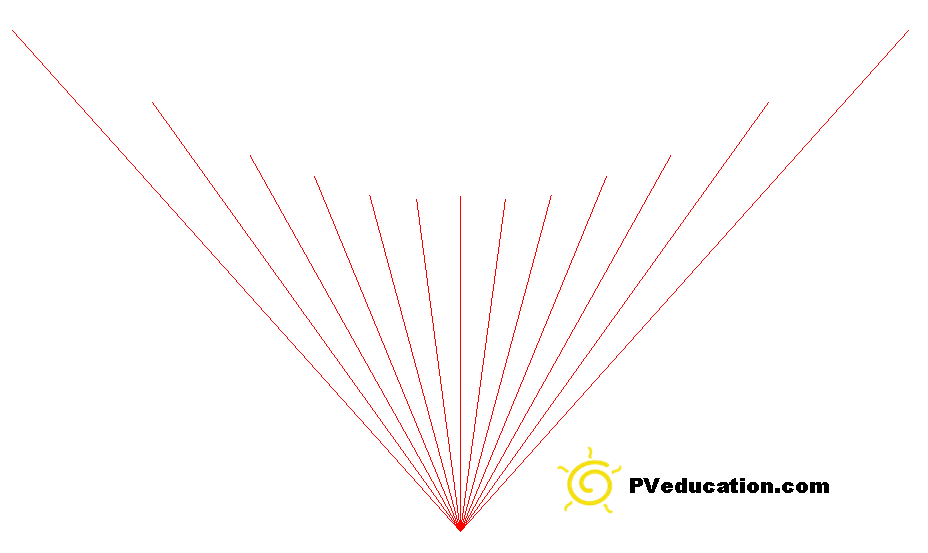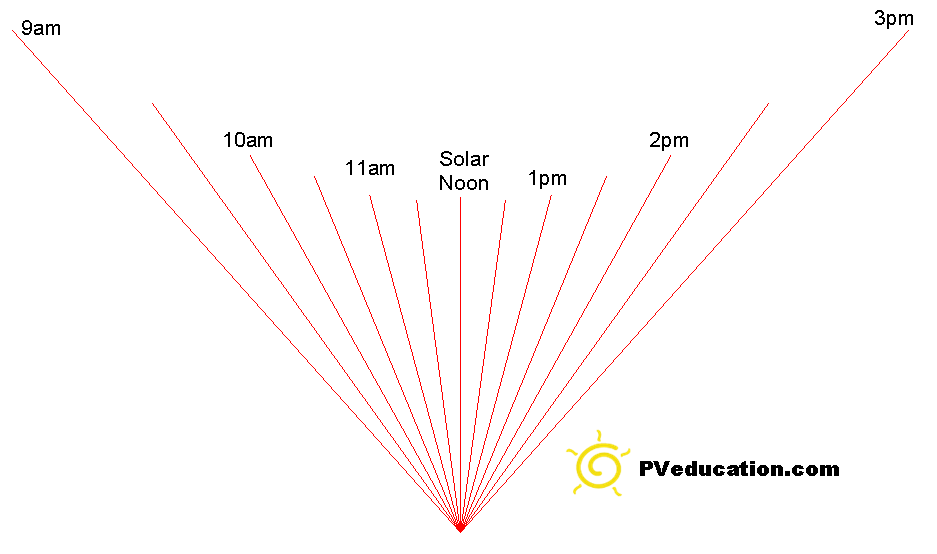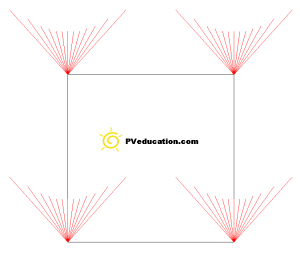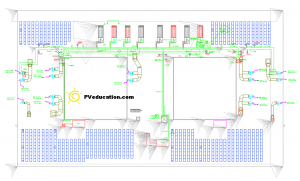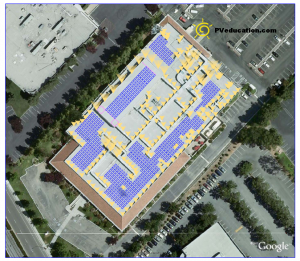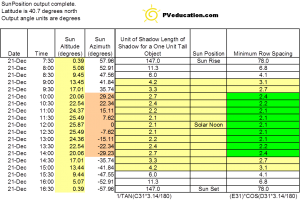Shadow Calculations for Row Spacing
When designing a solar system there is often the need to understand how long a shadow will be so you can properly plan for row spacing between solar modules. Keep in mind that the sun travels in an arch across the sky so both the sun’s altitude position and the azimuth must be accounted for when determining the length of a shadow. Due to the suns path the following is an image of the shadow caused by a stick throughout the day.
Notice the shape of the shadow. This is caused by the sun changing altitude as it changes azimuth. The center line is the shadow length at solar noon and each line is the shadow length every 30 minutes.
When designing a solar system this is often used during the layout process. For example, if you are designing an array for a flat commercial rooftop and there is a 4 ft tall HVAC unit on the roof you need to know where to position the solar modules to avoid the shade.
After you have created some templates for the areas you operate the steps for using the templates are straight forward to find the shadow length. The first step is to scale the shadow length template to the height of the object. Than you place the shadow lined on the corners of the object.
Next you remove the shadow lines that don’t apply and outline is the objects shadow.
Now you know where you can and can’t place the solar modules for optimum performance.
To determine the shadow length in excel the following is a view of the formulas (see bottom most row in below image) to use in my program. The basic formulas are nothing more then geometry. The sun is the top corner of a right angle triangle. You are finding the angle of the sun and you know the height of the object causing the shadow. You are solving for the bottom length of the triangle. The raw sun position data that I use comes from http://susdesign.com/sunposition/
As you run these calculations and create drawing templates for your area, I recommend completing your base design and drawings around an object that is 1 unit high and you can pick the units. I made my templates using a 1 ft high object to make scaling easy. If I have an object that is 5 ft tall, I simple scale my shadow drawing by 5. In the below image the shadow is 2.1 ft long at solar noon for a 1 ft tall object.
One item of note, is the day and time you select for your shadow calculations. I design systems in the USA so I selected Dec 21 which is the day the sun is the lowest in the sky and will produce the longest shadows. When I design a system I typically use 10 am to 2 pm as my solar window to avoid shade.
